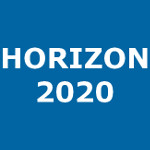A bayesian multivariate gametic model in a reciprocal cross with genomic information: an example with two iberian varieties
Srihi, Houssemeddine (Universidad de Zaragoza) ; López-Carbonell, David (Universidad de Zaragoza) ; Ibáñez-Escriche, Noelia ; Casellas, Joaquim ; Hernández, Pilar ; Negro, Sara ; Varona, Luis (Universidad de Zaragoza)
Resumen: INGA FOOD, S.A. initiated a crossbreeding program between two Iberian pig varieties, Retinto (R) and Entrepelado (E), with the goal of producing a hybrid sow (F1). Several studies have been conducted to evaluate its productive performance, and these studies have revealed differences in litter size between the two reciprocal crosses, suggesting the presence of genomic imprinting effects. To further investigate these effects, this study introduces a multivariate gametic model designed to estimate gametic correlations between paternal and maternal effects originating from both genetic backgrounds involved in the reciprocal crosses. The dataset consisted of 1258 records (the total number born—TNB and the number born alive—NBA) from 203 crossbred dams for the Entrepelado (sire) × Retinto (dam) cross and 700 records from 125 crossbred dams for the Retinto (sire) × Entrepelado (dam) cross. All animals were genotyped using the GeneSeek® GPP Porcine 70 K HDchip (Illumina Inc., San Diego, CA, USA). The results indicated that the posterior distribution of the gametic correlation between paternal and maternal effects was distinctly different between the two populations. Specifically, in the Retinto population, the gametic correlation showed a positive skew with posterior probabilities of 0.78 for the TNB and 0.80 for the NBA. On the other hand, the Entrepelado population showed a posterior probability of a positive gametic correlation between paternal and maternal effects of approximately 0.50. The differences in the shape of the posterior distribution of the gametic correlations between paternal and maternal effects observed in the two varieties may account for the distinct performance outcomes observed in the reciprocal crosses.
Idioma: Inglés
DOI: 10.3390/ani13101648
Año: 2023
Publicado en: Animals 13, 10 (2023), 1648 [9 pp.]
ISSN: 2076-2615
Factor impacto JCR: 2.7 (2023)
Categ. JCR: VETERINARY SCIENCES rank: 16 / 167 = 0.096 (2023) - Q1 - T1
Categ. JCR: AGRICULTURE, DAIRY & ANIMAL SCIENCE rank: 10 / 80 = 0.125 (2023) - Q1 - T1
Factor impacto CITESCORE: 4.9 - Animal Science and Zoology (Q1) - Veterinary (all) (Q1)
Factor impacto SCIMAGO: 0.698 - Veterinary (miscellaneous) (Q1) - Animal Science and Zoology (Q1)
Financiación: info:eu-repo/grantAgreement/EC/H2020/801586/EU/International Doctoral Programme for Talent Attraction to the Campus of International Excellence of the Ebro Valley/IberusTalent
Financiación: info:eu-repo/grantAgreement/ES/MCIU-CDTI/IDI-20170304
Financiación: info:eu-repo/grantAgreement/ES/MCIU/CGL2016-80155-R
Financiación: info:eu-repo/grantAgreement/ES/MICINN/PID2020-114705RB-I00
Tipo y forma: Congress (Published version)
Área (Departamento): Área Genética (Dpto. Anatom.,Embri.Genét.Ani.)
Exportado de SIDERAL (2024-11-22-12:02:41)
Visitas y descargas
Idioma: Inglés
DOI: 10.3390/ani13101648
Año: 2023
Publicado en: Animals 13, 10 (2023), 1648 [9 pp.]
ISSN: 2076-2615
Factor impacto JCR: 2.7 (2023)
Categ. JCR: VETERINARY SCIENCES rank: 16 / 167 = 0.096 (2023) - Q1 - T1
Categ. JCR: AGRICULTURE, DAIRY & ANIMAL SCIENCE rank: 10 / 80 = 0.125 (2023) - Q1 - T1
Factor impacto CITESCORE: 4.9 - Animal Science and Zoology (Q1) - Veterinary (all) (Q1)
Factor impacto SCIMAGO: 0.698 - Veterinary (miscellaneous) (Q1) - Animal Science and Zoology (Q1)
Financiación: info:eu-repo/grantAgreement/EC/H2020/801586/EU/International Doctoral Programme for Talent Attraction to the Campus of International Excellence of the Ebro Valley/IberusTalent
Financiación: info:eu-repo/grantAgreement/ES/MCIU-CDTI/IDI-20170304
Financiación: info:eu-repo/grantAgreement/ES/MCIU/CGL2016-80155-R
Financiación: info:eu-repo/grantAgreement/ES/MICINN/PID2020-114705RB-I00
Tipo y forma: Congress (Published version)
Área (Departamento): Área Genética (Dpto. Anatom.,Embri.Genét.Ani.)
Exportado de SIDERAL (2024-11-22-12:02:41)
Permalink:
Visitas y descargas
Este artículo se encuentra en las siguientes colecciones:
articulos > articulos-por-area > genetica
Notice créée le 2023-07-06, modifiée le 2024-11-25
